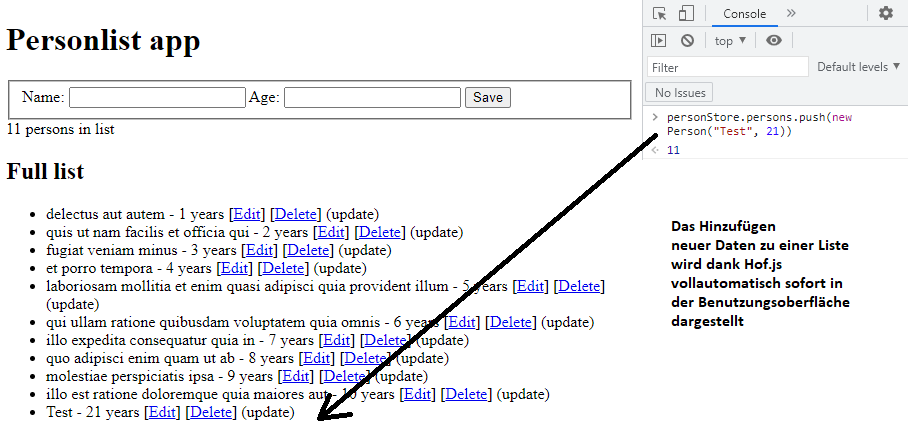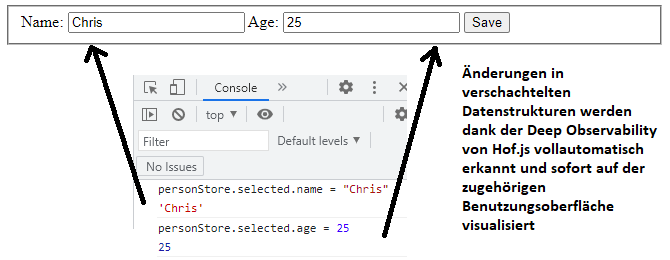Client-side web development, i.e. the development of modern web applications such as Gmail or Spotify, which are executed directly in the user’s browser, is mostly based on so-called web frameworks. Put simply, these are construction kits for software developers so that they can implement new web applications as efficiently as possible.

Currently, client-side web development is dominated worldwide by the web frameworks Angular (Google) and React (Meta/Facebook) as well as Vue. In the European/German market, there is currently no competitive solution and universities/universities have not been able to counter this either.
University project Hof.js offers innovative functionalities
The university project Hof.js under the direction of Prof. Dr. Walter Kern tries to change this and offers already in the first version innovative functionalities, which are partly clearly superior to the solutions of the top dogs Google & Co.
The starting point of the development is the current standstill in significant further developments in the area of the mentioned web frameworks despite unchanged existing deficits, which are regularly noticed by students in lectures on web development.”
Prof. Dr. Walter Kern
One main problem is that changes in hierarchical or nested data are in many cases not recognized by the respective web framework. E.g. if the house number of an address of a person is changed, this would not be detected and visualized automatically, but this has to be considered explicitly in the programming.

Changes in lists, for example in the form of inserting and saving a new person in a list of people, are also not automatically detected by current web frameworks, but must be coded manually by the programmer.
Hof.js. solves this and other problems by moving the intelligence into the framework. That is, instead of the programmer manually implementing responses to changes in data, such as updating the display, Hof.js monitors the data and updates exactly those parts of the web application affected by the data changes fully automatically.”
Prof. Dr. Walter Kern
In contrast to the aforementioned popular solutions from Google & Co., Hof.js offers so-called Deep Observability. In simple terms, this means that even changes in deeply nested data structures (e.g. a change in the street of a person’s address – coded as person.address.street) are automatically detected and not only changes at the highest level (e.g. a change in a person’s name).

In the future, Hof.js will be used in various practical projects. In this context, upcoming practical and bachelor theses should also bring further momentum into the development. Automatic packaging in Android/iOS apps is also being considered, which would create a new web standards-centric solution for cross-platform development.
More information about Hof.js can be found at https://github.com/hofjs/hof and https://hofjs.github.io.







